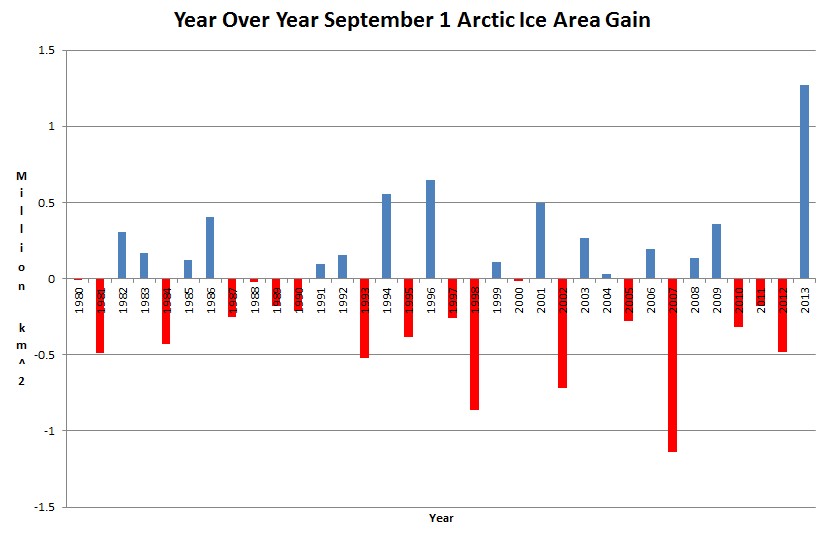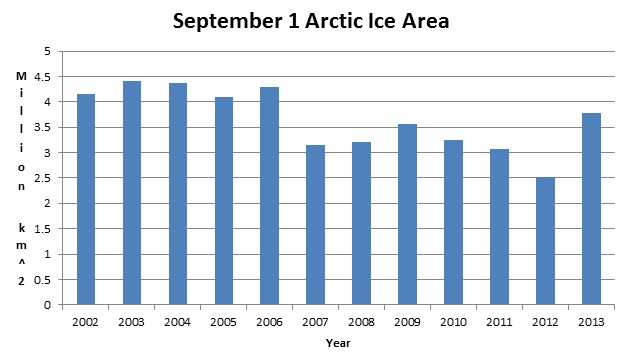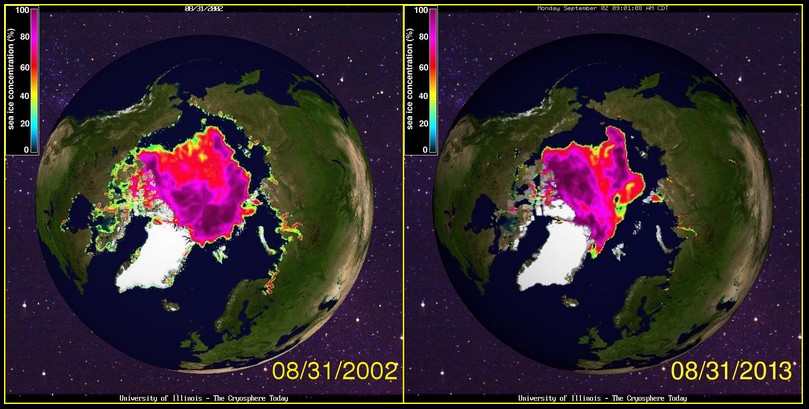One of alarmist’s favorite games is saying that we aren’t allowed to look at Arctic ice until September. So it is now safe to look.
This year has obliterated the record for year over year ice gain, by a factor of two. It is now close to what it was in 2002





And this is happening at solar max !
I’m moving south.
Second Light snow for Barrow Alaska today.
http://feeder.gina.alaska.edu/webcam-uaf-barrow-seaice-images/current/image
They groomed a path to the Greenland Country Club Bar yesterday but more snow fell again last night.
http://www.summitcamp.org/static/images/status/view/webcam.jpg
They must of groomed some time today, missed the grooming machine, fresh tracks now and snow falling again.
It is amazing how much snow in water content has been falling on Greenland, sea levels COULD drop some.
looks like 1938 to me….
Looks like Greenland has more ice now than during 2002. Also more thick ice safely tucked away in the western arctic, only to get even thicker this winter.
That’s impossible. I heard it may never recover.
Yes, in “An Inconvenient Truth”, this was supposed to be a major tipping point. Because shiny ice was replaced by dark liquid water, the earth would reflect less sunlight and get hotter even faster once the polar ice melted.
What does this weather event have to do with global warming? Nothing
Huh?
The solar guys have been predicting this scenario since the early 90’s. This is just the beginning. It is going to get much worse. When something happens and you are taken by surprise it’s a “So what?” When it happens as you said you say, in the words of Bullwinkle the moose, “Just as I predicted.” 16 years of no warming is not a weather event. It’s the new normal. When you beat the old record by a factor of 2X, it’s “Holy S**t!”.
What global warming?
PRESS RELEASE
May 30, 2013, 12:01 p.m. ET
(PR) Global warming caused by CFCs, not carbon dioxide, study says
WATERLOO, ON, May 30, 2013 /PRNewswire/ – Chlorofluorocarbons (CFCs) are to blame for global warming since the 1970s and not carbon dioxide, according to new research from the University of Waterloo published in the International Journal of Modern Physics B this week.
CFCs are already known to deplete ozone, but in-depth statistical analysis now shows that CFCs are also the key driver in global climate change, rather than carbon dioxide (CO(2) ) emissions.
“Conventional thinking says that the emission of human-made non-CFC gases such as carbon dioxide has mainly contributed to global warming. But we have observed data going back to the Industrial Revolution that convincingly shows that conventional understanding is wrong,” said Qing-Bin Lu, a professor of physics and astronomy, biology and chemistry in Waterloo’s Faculty of Science. “In fact, the data shows that CFCs conspiring with cosmic rays caused both the polar ozone hole and global warming.”
“Most conventional theories expect that global temperatures will continue to increase as CO(2) levels continue to rise, as they have done since 1850. What’s striking is that since 2002, global temperatures have actually declined – matching a decline in CFCs in the atmosphere,” Professor Lu said. “My calculations of CFC greenhouse effect show that there was global warming by about 0.6 degC from 1950 to 2002, but the earth has actually cooled since 2002. The cooling trend is set to continue for the next 50-70 years as the amount of CFCs in the atmosphere continues to decline.”
The findings are based on in-depth statistical analyses of observed data from 1850 up to the present time, Professor Lu’s cosmic-ray-driven electron-reaction (CRE) theory of ozone depletion and his previous research into Antarctic ozone depletion and global surface temperatures.
“It was generally accepted for more than two decades that the Earth’s ozone layer was depleted by the sun’s ultraviolet light-induced destruction of CFCs in the atmosphere,” he said. “But in contrast, CRE theory says cosmic rays – energy particles originating in space – play the dominant role in breaking down ozone-depleting molecules and then ozone.”
Lu’s theory has been confirmed by ongoing observations of cosmic ray, CFC, ozone and stratospheric temperature data over several 11-year solar cycles. “CRE is the only theory that provides us with an excellent reproduction of 11-year cyclic variations of both polar ozone loss and stratospheric cooling,” said Professor Lu. “After removing the natural cosmic-ray effect, my new paper shows a pronounced recovery by 20% of the Antarctic ozone hole, consistent with the decline of CFCs in the polar stratosphere.”